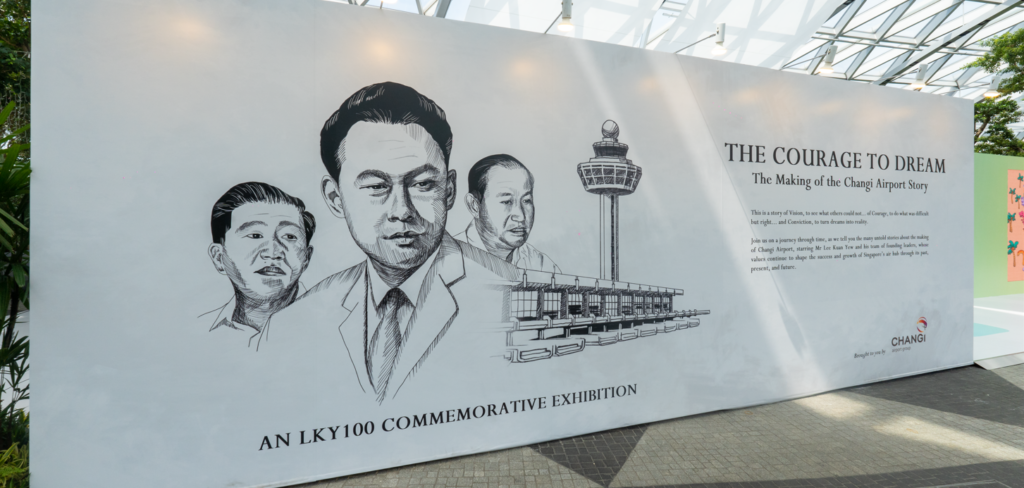Jewel Changi Airport in Singapore has unveiled an interactive exhibition about the late Lee Kuan Yew and how he and his team made Changi Airport possible.
‘The Courage to Dream – The Making of the Changi Airport Story’ is a commemorative exhibition, which features six interactive zones and archival content. The immersive walk-through exhibition takes viewers from the 1970s to the present day, and even provides a glimpse of the future of aviation. The exhibition will be open to the public for free until September 30, 2023, at Cloud9 Piazza, Level 5 of Jewel Changi Airport. Thereafter, the exhibition will be moved to another location within the airport.
The journey begins in Chapter 1: Growing Pains. Here, visitors can learn about the history and growth of Paya Lebar Airport in the early 1970s, as well as the challenges faced by residents who had to endure the inconveniences of living so close to an airport with flight paths across the heart of the island city, leading to disruptions in their daily lives. Passengers can witness the first-ever mention of Changi, through an audio clip of Yew, then prime minister, speaking to a crowd in Katong about a possible move of the airport from Paya Lebar to Changi.
In Chapter 2: Dreams are Made of Struggles, visitors learn that the transition was far from straightforward. The pace of air traffic growth meant there was an urgent need for quick expansion, which pointed to Paya Lebar as the more immediate and feasible solution. The exhibition details the twists and turns in the first half of the 1970s, as Yew and his team struggled with the difficult decision of the move, which involved weighing various significant trade-offs, including the impact on surroundings, potential for expansion, time pressure and cost. Through story exhibits and interactive digital activities, visitors can understand each of these considerations and relive the dilemma that Yew then faced.
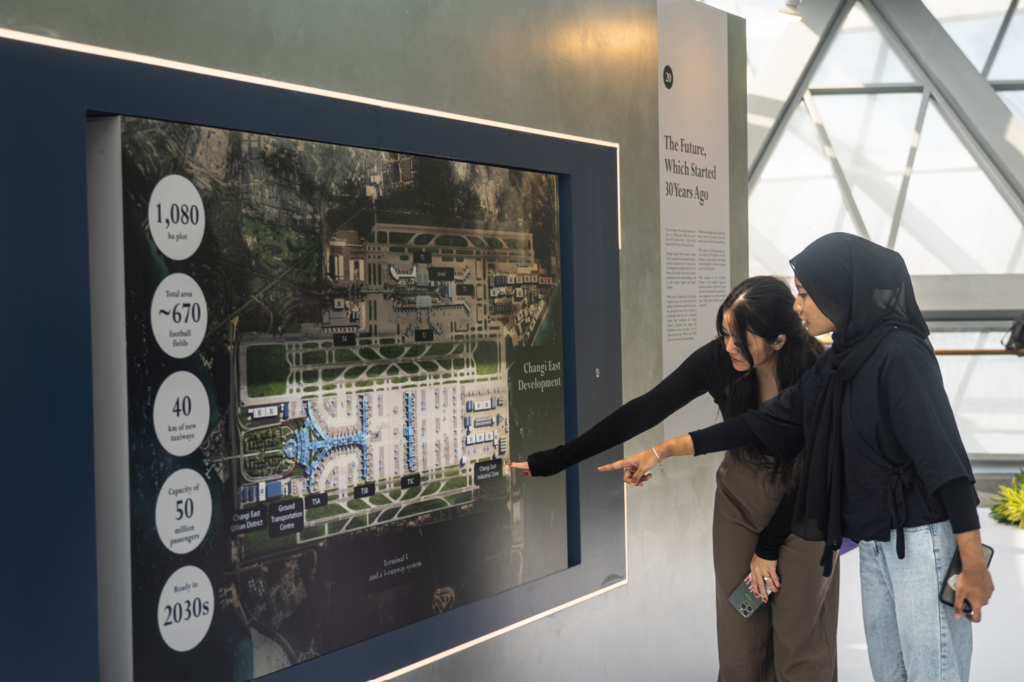 The 1973 oil crisis brought about an abrupt slowdown, which bought time and led to the unexpected opportunity to revisit the Changi option – a prospect that Yew was convinced was better for Singapore in the long run. His conviction was affirmed during a chance flight over Boston’s Logan Airport in the USA, where he saw for himself the benefits of having flight paths offshore.
The 1973 oil crisis brought about an abrupt slowdown, which bought time and led to the unexpected opportunity to revisit the Changi option – a prospect that Yew was convinced was better for Singapore in the long run. His conviction was affirmed during a chance flight over Boston’s Logan Airport in the USA, where he saw for himself the benefits of having flight paths offshore.
In 1975, Yew convened the Special Committee on Airport Development (SCAD), headed by Howe Yoon Chong, then head of the civil service and chairman of Port of Singapore Authority. In three months, the committee presented its recommendations, advocating for the construction of two runways at Changi to swiftly expand airport capacity and boost Singapore’s economic growth.
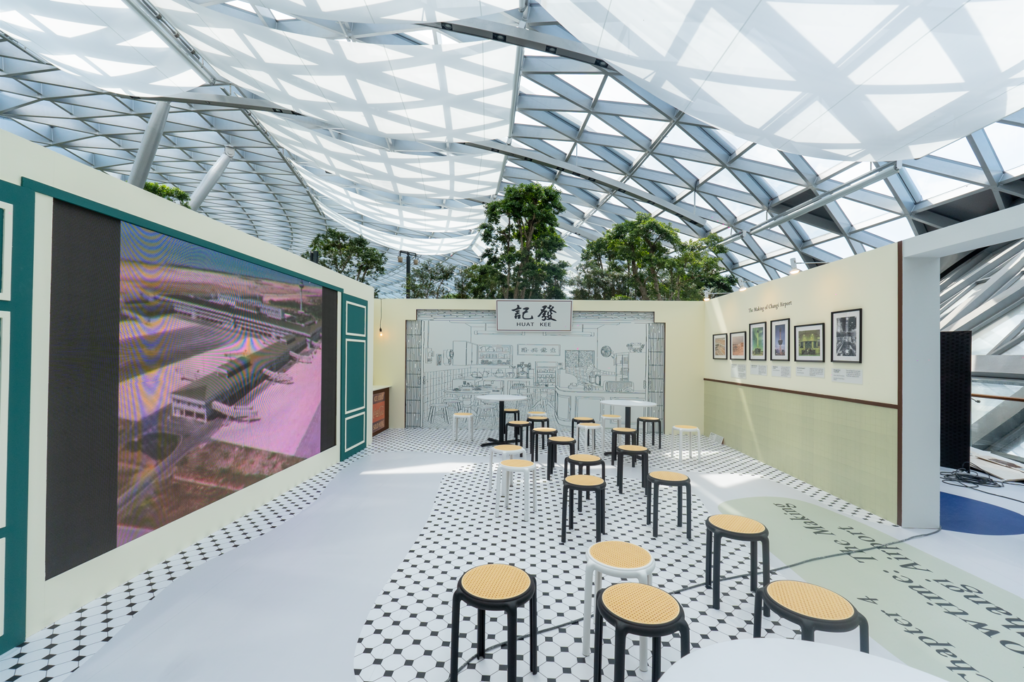 For the first time ever, visitors can also view a signed cover page of the pivotal SCAD final report, which led to the green light for the development of Changi. In this zone, visitors can also find out more about Howe and Sim Kee Boon – the two men credited for helping to realize the Changi dream.
For the first time ever, visitors can also view a signed cover page of the pivotal SCAD final report, which led to the green light for the development of Changi. In this zone, visitors can also find out more about Howe and Sim Kee Boon – the two men credited for helping to realize the Changi dream.
After 1977, the monumental construction of Changi Airport began. In Chapter 4: Showtime: The Making of Changi Airport, visitors can watch a short film on the creation of the airport, which features archival documentary footage of the construction of Terminal 1 and first-hand commentary from pioneering airport leaders on Lee’s vision and leadership. Key development milestones of Terminal 1 are also chronicled through a series of archival photographs, leading up to the opening of Changi Airport on July 1, 1981, heralding the dawn of a new era in aviation history.
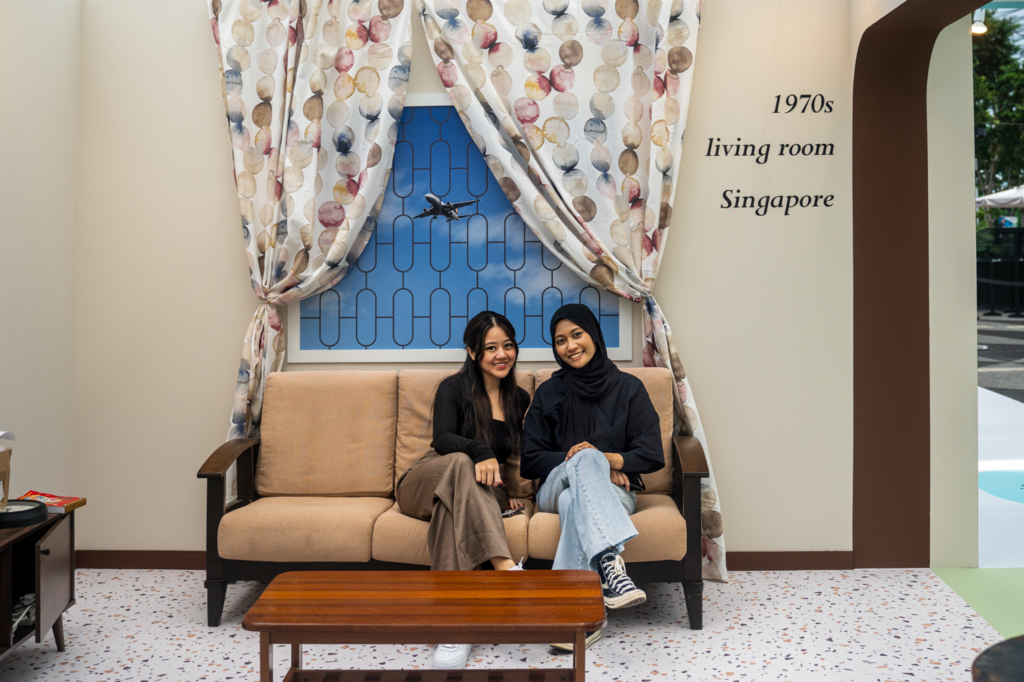 In Chapter 5: The Pursuit of Excellence, passengers can access anecdote-filled stories of how Yew and the airport’s founders drove the establishment of Changi as an air hub and its growth into the highly awarded airport it is today. Visitors can see the early masterplan of Changi Airport in 1981 and witness its transformation through the decades, evolving from a single terminal to a large aviation hub with multiple terminals.
In Chapter 5: The Pursuit of Excellence, passengers can access anecdote-filled stories of how Yew and the airport’s founders drove the establishment of Changi as an air hub and its growth into the highly awarded airport it is today. Visitors can see the early masterplan of Changi Airport in 1981 and witness its transformation through the decades, evolving from a single terminal to a large aviation hub with multiple terminals.
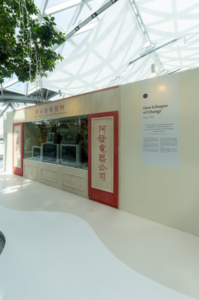 Looking to the future, Chapter 6: Building on the Dream illustrates how the decisions made decades ago are today instrumental to the next chapter of Changi Airport. The foresight and decisiveness to invest in a second massive and complex land reclamation effort in the 1990s laid the foundation for today’s undertaking – the Changi East development, which includes a new Terminal 5.
Looking to the future, Chapter 6: Building on the Dream illustrates how the decisions made decades ago are today instrumental to the next chapter of Changi Airport. The foresight and decisiveness to invest in a second massive and complex land reclamation effort in the 1990s laid the foundation for today’s undertaking – the Changi East development, which includes a new Terminal 5.
Jayson Goh, executive vice president of airport management at Changi Airport Group, said, “Mr Lee Kuan Yew’s bold decision to relocate Singapore’s airport from Paya Lebar to Changi marked a pivotal moment in aviation history. To this day, we continue to be deeply grateful for the vision, courage and conviction demonstrated by Mr Lee and our pioneering airport leaders, which paved the way for Changi Airport’s growth over the past decades and beyond. We hope to inspire and educate the community through these lesser-told stories, which highlight the values that made Changi Airport possible and still guide how we run the airport today.”
To find out more about Changi International Airport’s latest developments, click here.

